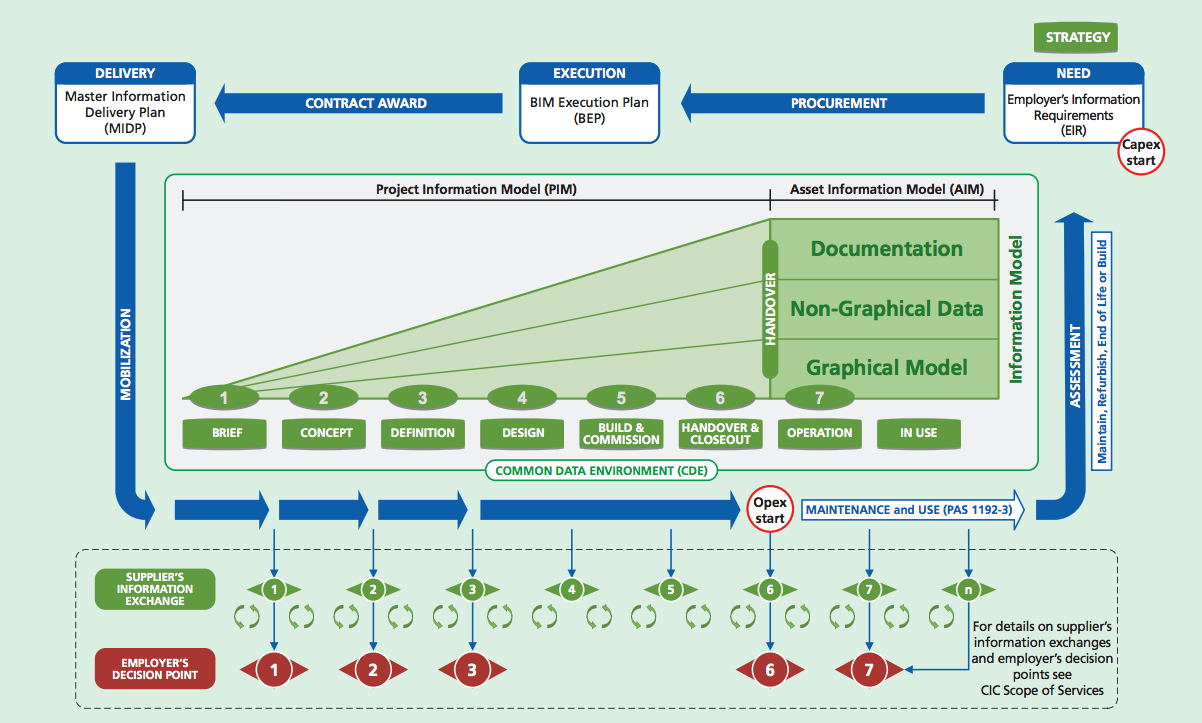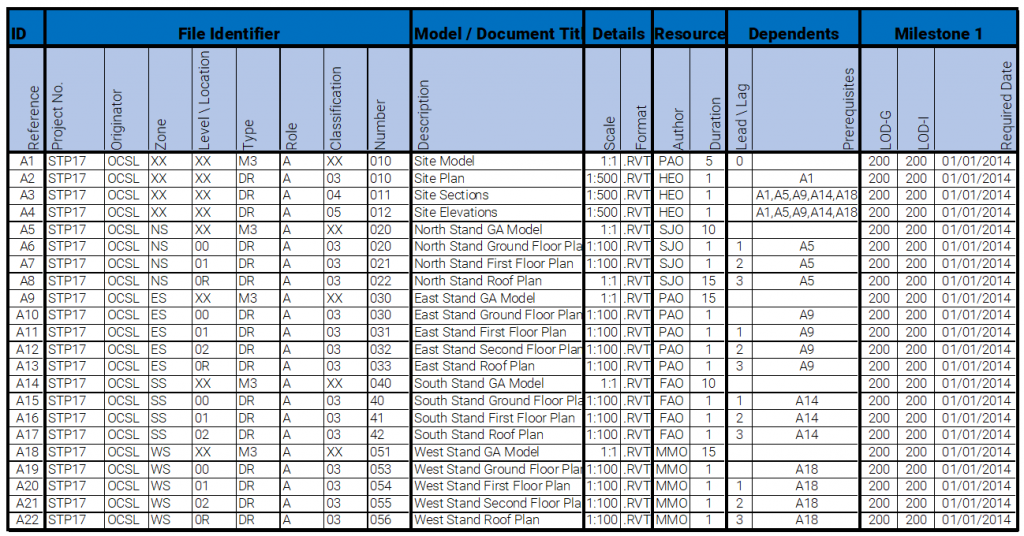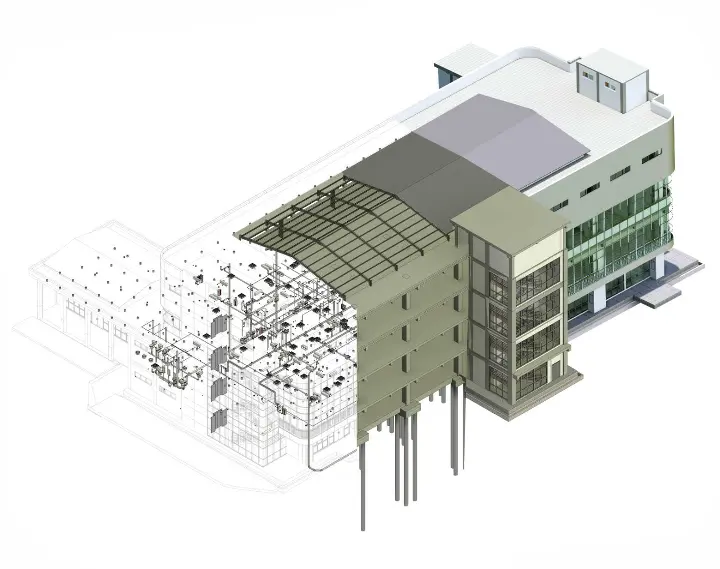In the modern construction industry, Building Information Modeling (BIM) has evolved into an irreplaceable tool. As project complexity increases, structured information management becomes the key to project success. Amidst this, MIDP (Master Information Delivery Plan) and TIDP (Task Information Delivery Plan) emerged as vital elements in BIM project execution. This article will deepen your understanding of MIDP and TIDP, covering the differences, when and why you should create one, and the steps to develop one.
A. Difference Between MIDP and TIDP
1. Master Information Delivery Plan (MIDP)
MIDP is a document that details the information required to run, manage, and maintain an infrastructure asset throughout its life cycle. This is not just a plan, but also a valuable guide for the entire project team. Details typically included in the MIDP include:
- Project Phase: Describes the phases of the project in which information will be delivered.
- File Name: The name and type of file that will be used to organize the information.
- Description: A brief description of the information content, ensuring all parties understand the context.
- Information Author: The name of the individual or entity responsible for the information, providing accountability.
- Schedule: The times or stages when information will be delivered, assisting in planning and coordination.
- Other Information: Additional information such as specifications, standards, or other references relevant to the delivery of the information.

Illustrative Example : The Master Information Delivery Plan (MIDP)*
2. Task Information Delivery Plan (TIDP)
TIDP focuses more on specific tasks that need to be completed in the context of a BIM project. This document is an important tool to ensure all tasks are carried out according to established standards. Key components in TIDP include:
- Project Phase: The phase of the project in which the task will be completed, helping in resource allocation and time management.
- Task Name: The name or description of the task to be performed, providing clarification of what is expected.
- Responsible Person: The individual or team responsible for the task, ensuring responsibility and accountability.
- Schedule: Time or stages when tasks must be completed, helps in monitoring and evaluation.
- Supporting Information: Materials, resources, or other references necessary to complete a task, ensuring smooth execution.

Illustrative Example : Task Information Delivery Plan (TIDP)**
B. When and Why Should You Create MIDP and TIDP?
Creating MIDP and TIDP should be done early in the BIM project planning phase. These two documents are the foundation for efficient and effective project management. Here are some reasons why MIDP and TIDP are important:
- Better Coordination: By having a clear plan, all parties involved can work in a coordinated manner.
- Fast Decision Making: Structured and clear information makes decision-making easier.
- Effective Risk Management: By knowing what to expect, the risk of errors or delays can be minimized.
- Quality Improvement: Defined standards and procedures will improve the quality of the final project outcome.

C. Steps in Developing MIDP and TIDP
Creating MIDPs and TIDPs is not a simple task, but with a systematic approach, you can produce effective and relevant documents for your project. Here are the steps you can follow:
- Identify Needs: Determine the type of information or tasks that need to be delivered based on project needs. Involving all stakeholders in this process can ensure all aspects of the project are covered.
- Select Document Format: Tailor the document format to the project's needs and standards, perhaps in the form of a spreadsheet, project management software, or other documentation that is easy to access and manage.
- Determine the Person in Charge: Determine the individual or team responsible for each stage or task at hand. This is an important step to ensure accountability and smooth execution.
- Set a Delivery Schedule: Determine schedules or milestones for when each piece of information or task must be completed. This will be a reference in project planning, implementation, and evaluation.
- Validate and Revise: After all the information and schedules have been prepared, make sure all relevant parties validate the document. Make revisions as necessary to ensure accuracy and relevance.
Conclusion
By understanding the differences, requirements, and steps in developing MIDP and TIDP, you already have a solid foundation for drafting these documents for your BIM project. As control and guidance tools, MIDP and TIDP play an important role in ensuring projects run according to established plans and standards. By applying these principles, you will position your projects for greater success and higher efficiency.
* Photo Source MIDP
** Photo Source TIDP